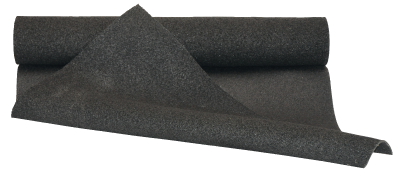
CONTACTS
Project for Building S.p.a.
Via Fornace
24050 Mornico al Serio (BG)
Tel. 035 44 90 440
Fax 035 44 90 752
info@projectforbuilding.com
DAMPROLL is a rubber mat supplied in rolls, for preventing impact sound.
The use of a noble polymer-based binder with very high elasticity, along with the innovative surface of the mat, allow a high level of impact sound insulation which lasts well over time.
DAMPROLL is made with rubber granules obtained from used tyres. It is characterized by a «skin» surface on the upper side and a «rough» finish on the side in direct contact with the surface to be insulated.
Use
DAMPROLL is used to create high-performance packages, as a resilient horizontal layer of separation.
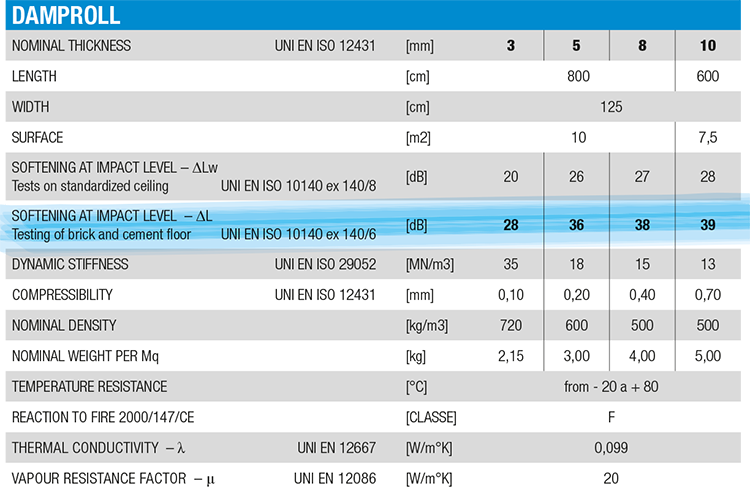
- Apply DAMP STRIP L to the perimeter of the room to be insulated at the point of contact between the mat and the walls.
- Roll out the DAMPROLL mat with the smooth surface facing up.
- Pull the rolls flat and apply the special DAMP SCOTCH tape to the joins.
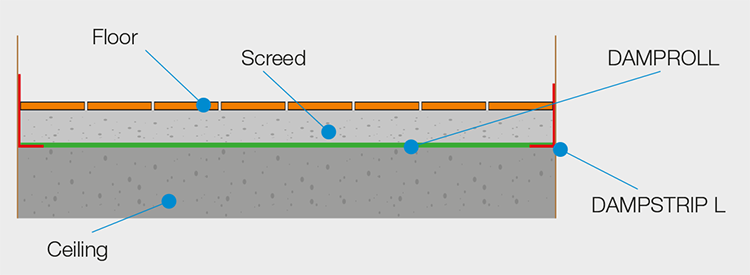
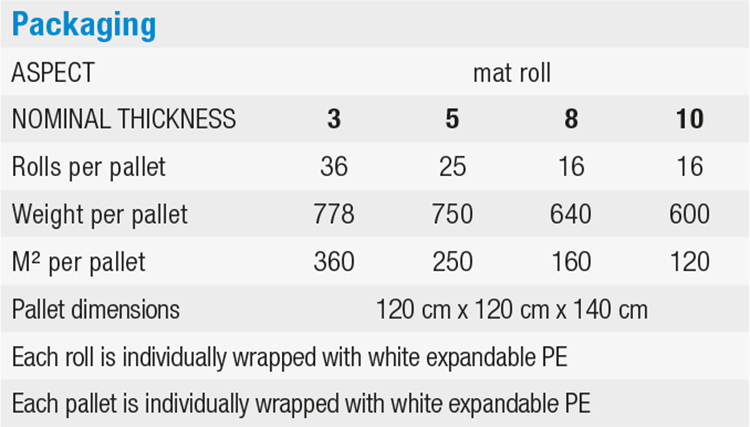
Storage
Store and keep away from direct sunlight
Care and Safety
The product is not subject to the obligation set out in Directive 67/648/ EEC. The compound does not contain formaldehyde, carbide fluorine, mercury or similar. It does not emit toxic fumes.
Conversion from apparent dynamic stiffness to real dynamic stiffness
as a function of the flow resistivity.
The flow resistivity is dependent on the intrinsic properties of the material. A process was set up to measure the resistance to air flow (in standard EN ISO 29053) as a function of static load applied. DAMPROLL’s resistivity to the flow of air «at compression» was checked, in order to discover the real behaviour of air within the material under operating conditions, i.e. under static load. This measurement was made by considering the peculiarity of the rubber material: the rubber granules are bound by a polymeric film, so the material is not classifiable as either fibrous or as porous (open cell), and has a considerable thickness associated with high porosity. The experiments carried out determined the resistance to flow, and then the resistivity as a function of the increase in static load applied. Since the data flow resistivity measured is much less than 10 kPa * s / m2, and the dynamic stiffness of the air s’a is significantly lower than that of the material, the data of apparent dynamic stiffness measured [s’t] coincides with the real dynamic stiffness of the material [s’].
Load-deformation curves
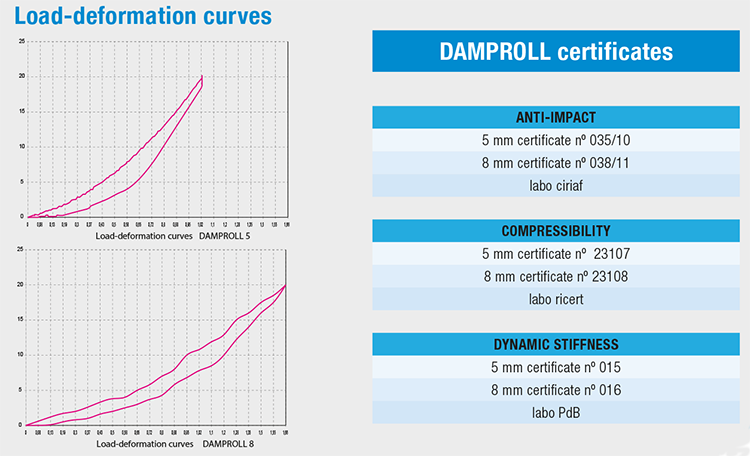
Richiesta di calcolo previsionale acustico (UNI EN 12354/1/2/3/ – UNI TR 11175)
NOTE PER LA COMPILAZIONE Il “committente” sarà l’intestatario della relazione di calcolo. Specificare nella “classificazione ambienti abitativi” la destinazione d’uso dei locali come da tabella A DPCM 05 12 97, specificando se cambia da sorgente a ricevente. Nella “descrizione partizione” indicare per ogni singolo strato: • la tipologia di materiale previsto: intonaco, calcestruzzo, laterizio, ecc. [dato necessario] • lo spessore in mm a disposizione da progeto e la densità del materiale [dato necessario] • il peso specifico del materiale previsto [dato opzionale – in mancanza dello stesso sarà utilizzata la densità standard per la tipologia di materiale indicato presente nel nostro database]. Se la partizione è composta da più di dieci strati compilare più schede di richiesta indicando nelle note l’ordine di lettura delle diverse schede. IMPORTANTE: indicare SEMPRE l’agente di riferimento, la relazione di calcolo sarà trasmessa esclusivamente all’agente che provvederà a farla pervenire al committente. Nel caso di non conoscenza dell’agente di riferimento prego compilare il campo PROVINCIA









